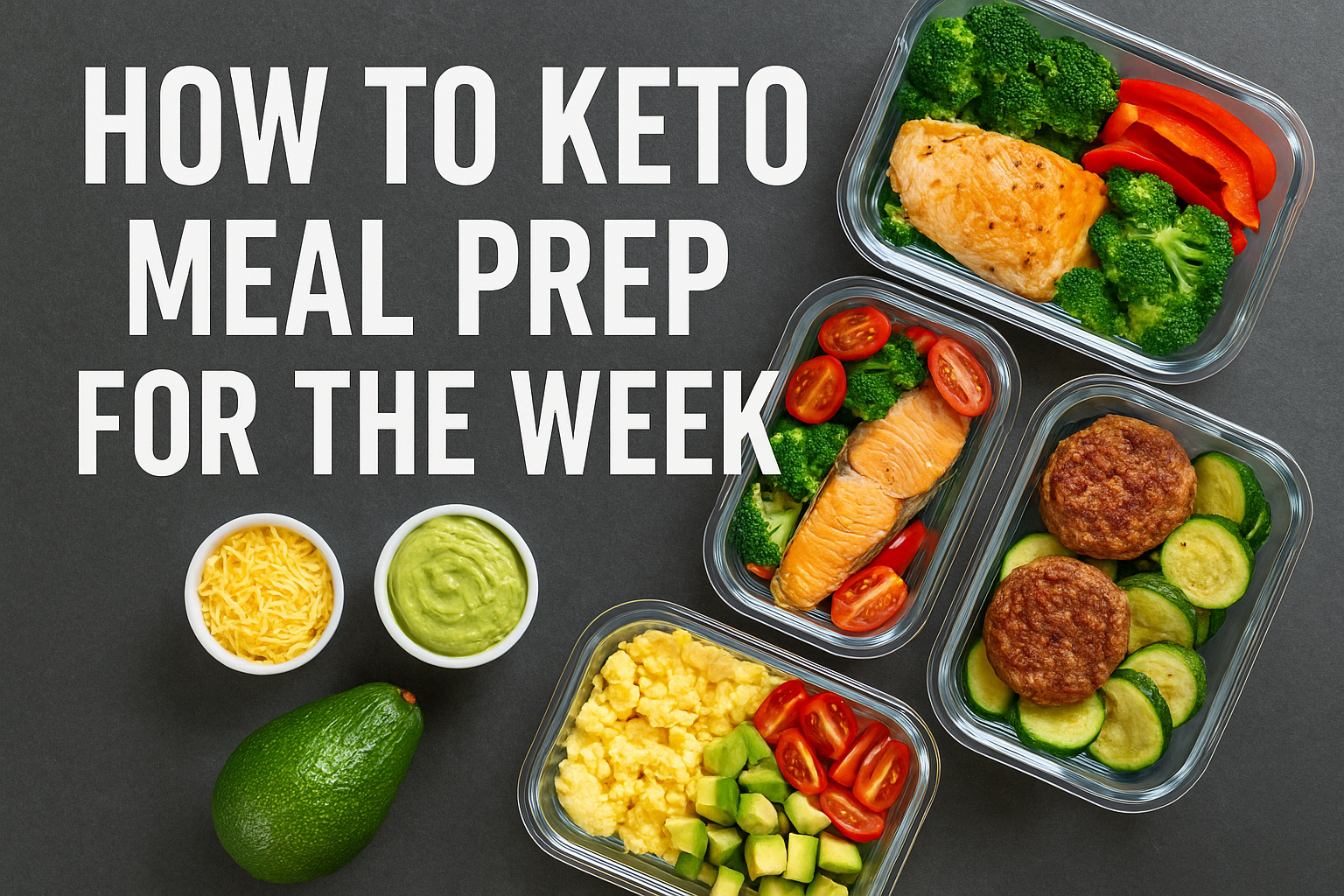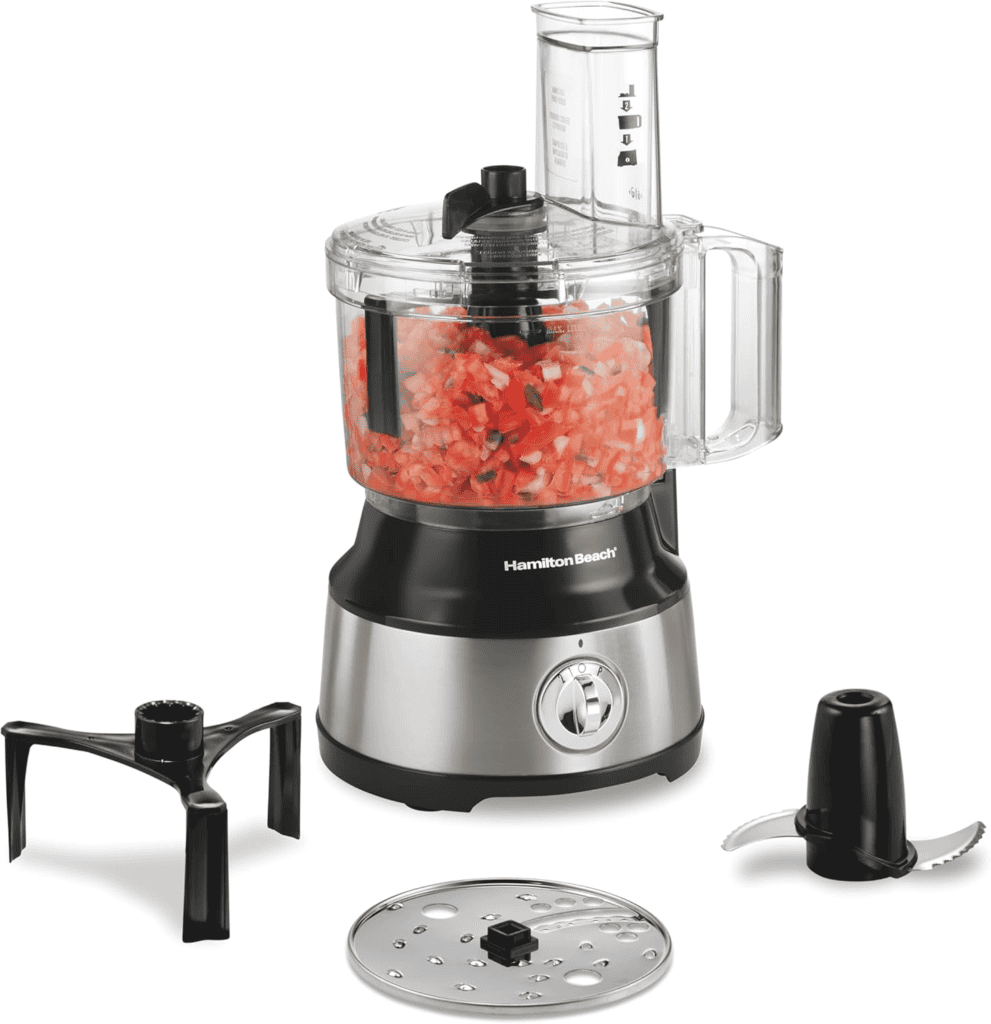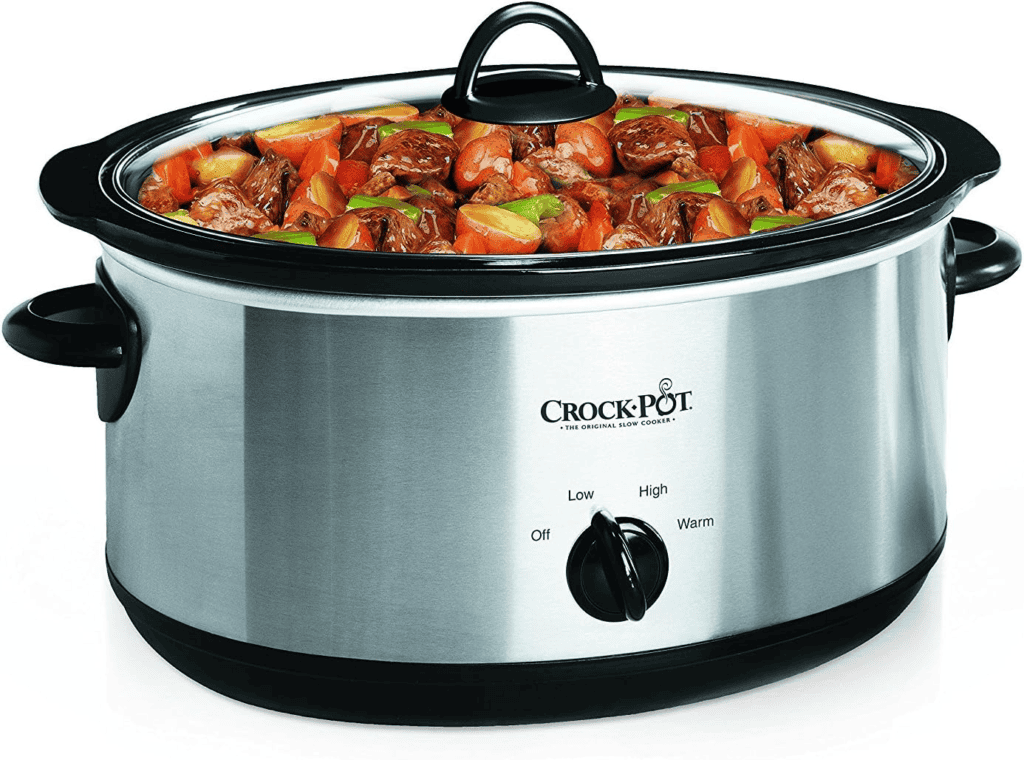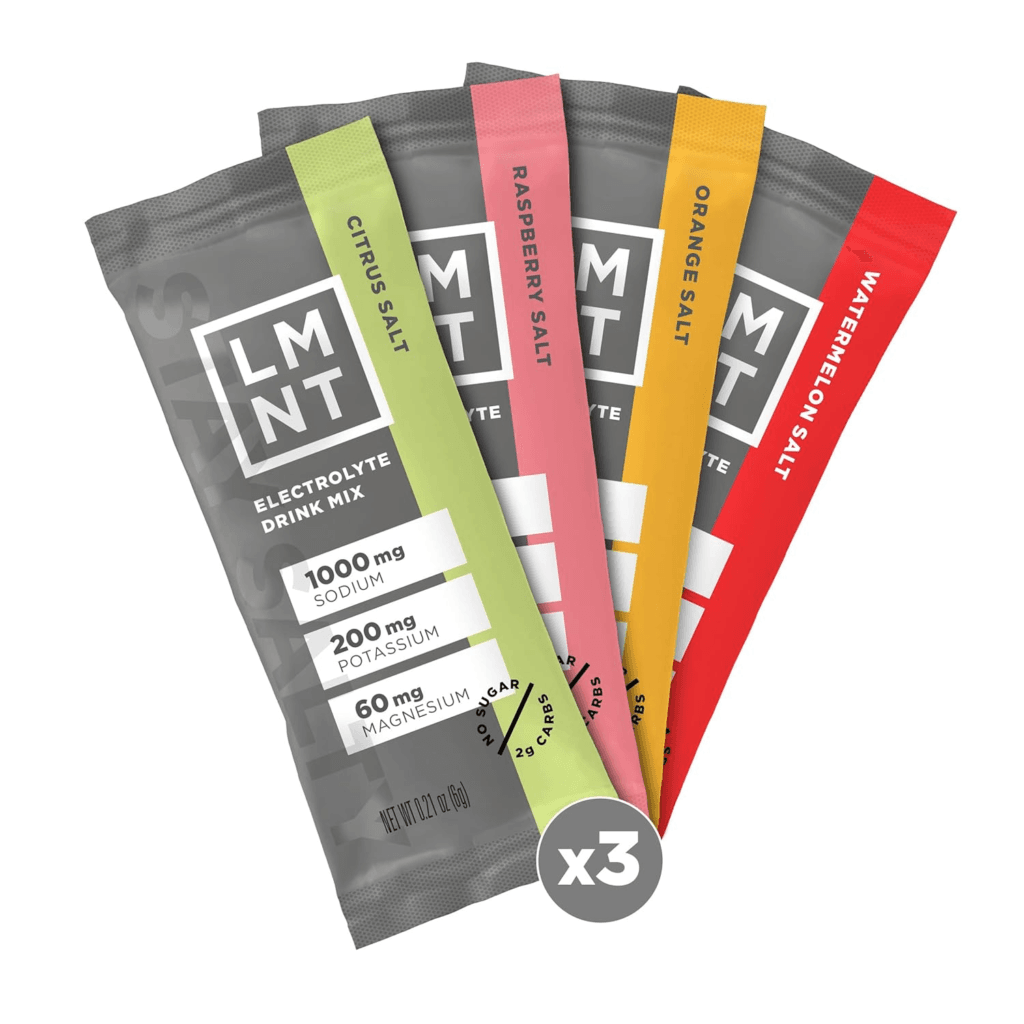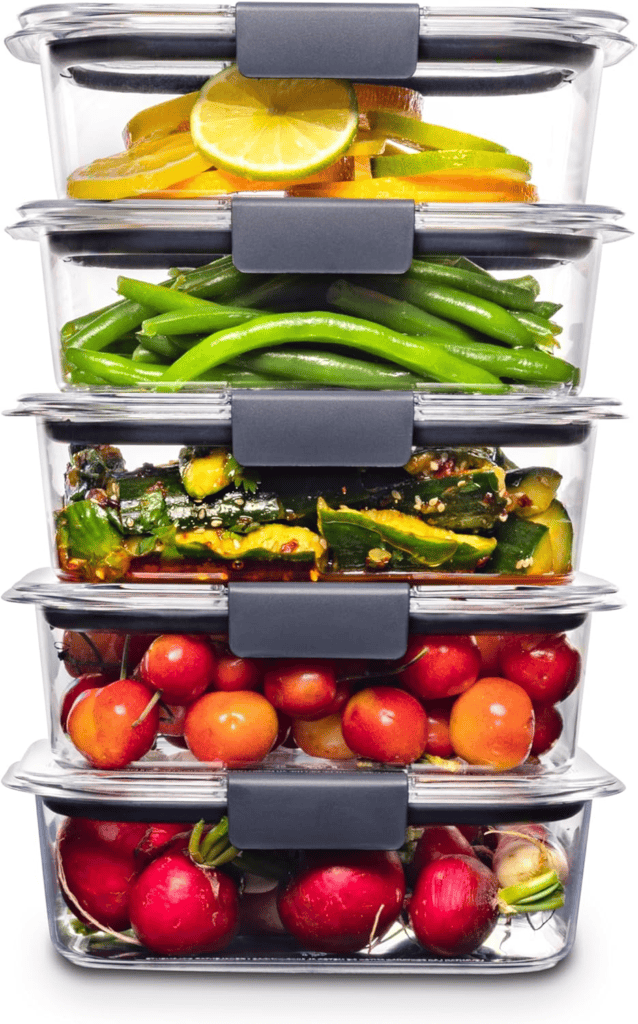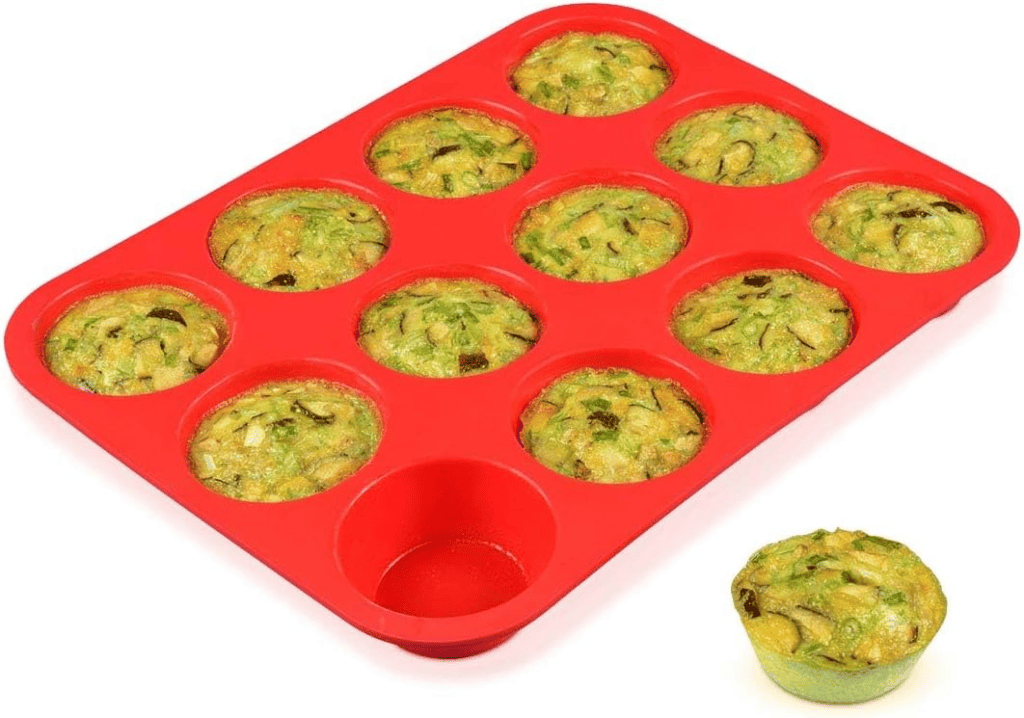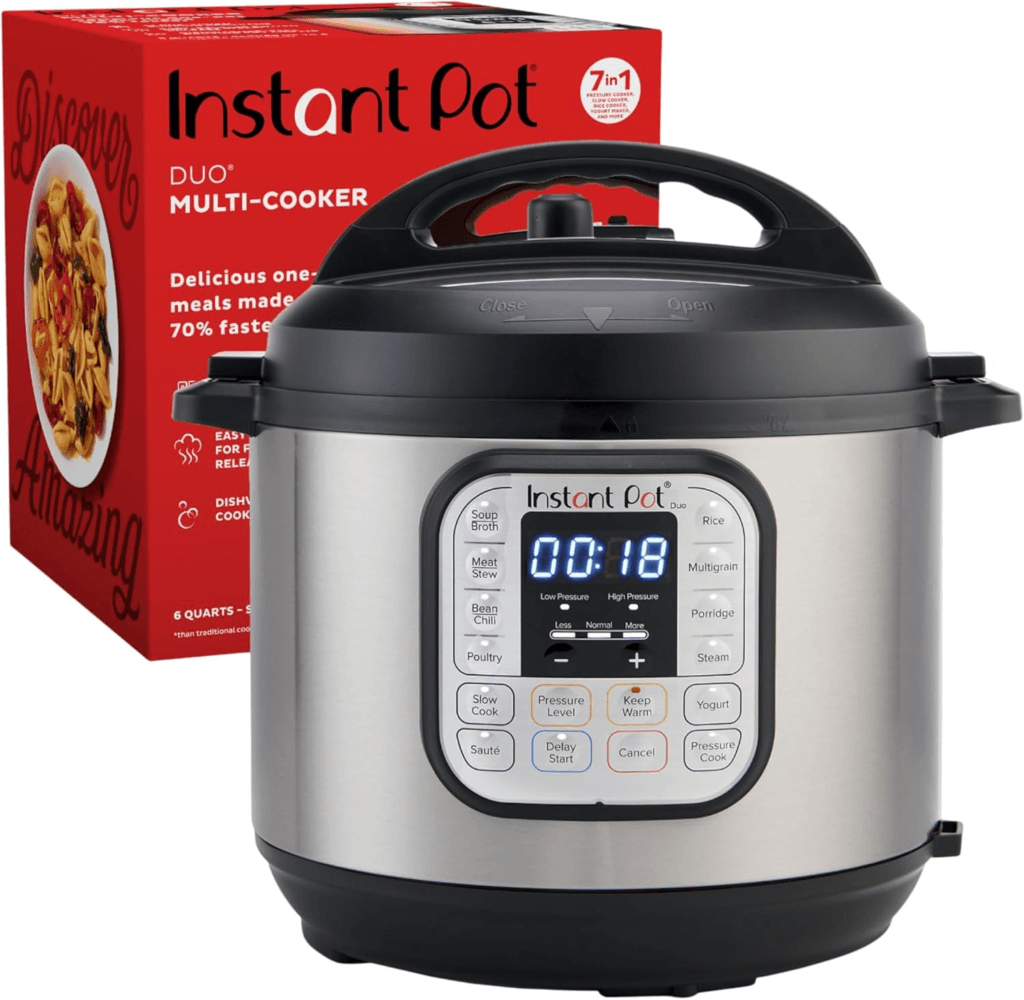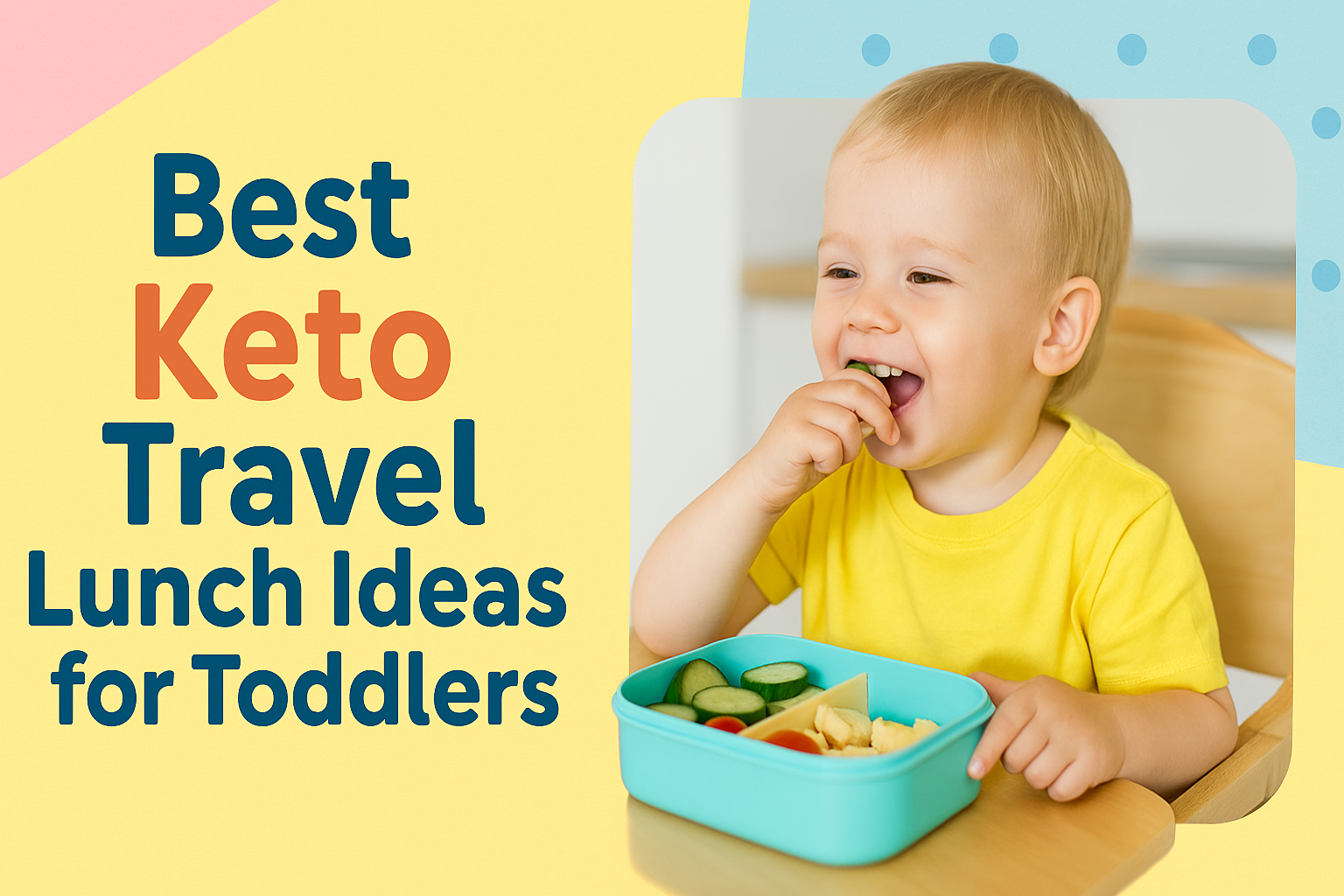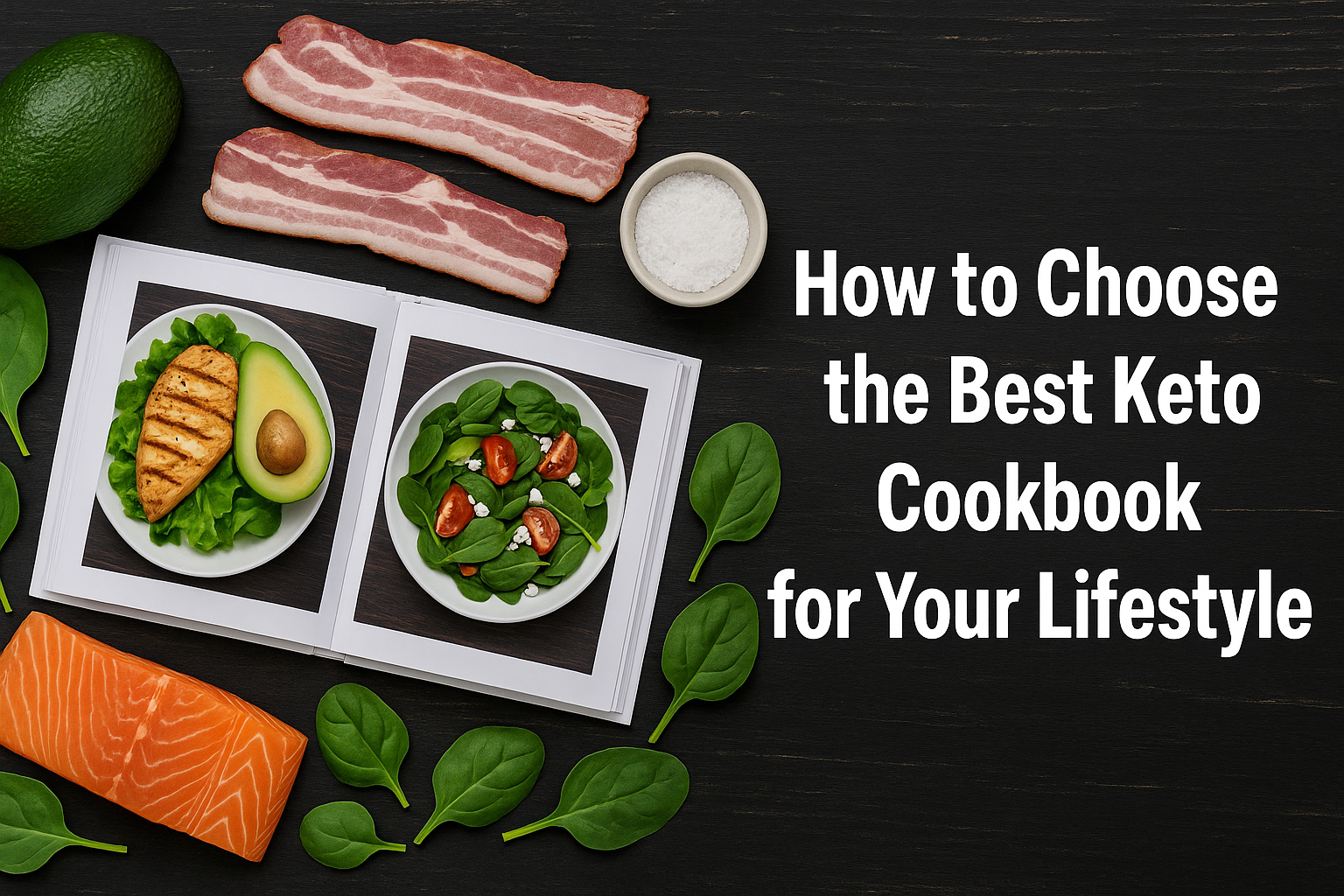Introduction
Keto meal prepping has transformed my approach to the ketogenic diet. By dedicating a few hours each week to planning and preparing meals, I’ve eliminated daily stress, saved time, and consistently hit my macronutrient targets.
In this guide on how to keto meal prep for the week, I’ll walk you through everything you need to know, from understanding the basics to implementing advanced strategies. Whether you’re looking to streamline your meal planning, save time, or maintain ketosis effortlessly, this step-by-step approach will help you stay on track.
Pro Tip: To keep your keto meals fresh all week long, invest in high-quality food storage containers like the Rubbermaid Brilliance Food Storage Containers – leak-proof, microwave-safe, and perfect for meal prepping!
Affiliate Disclaimer: This article contains affiliate links, meaning I may earn a small commission if you purchase through these links—at no extra cost to you. This helps support my work and allows me to continue providing helpful keto content.
Now, let’s dive into how to keto meal prep for the week and make your ketogenic journey stress-free and successful!
Understanding Keto Meal Prep Basics
The ketogenic diet is a high-fat, moderate-protein, and low-carbohydrate eating plan. Its primary goal is to shift your body into ketosis, a metabolic state where fat becomes the primary fuel source instead of carbohydrates.
To achieve and maintain ketosis, you’ll need to carefully balance your macronutrients:
- 70-75% of calories from fat
- 20-25% of calories from protein
- 5-10% of calories from carbohydrates
Keto meal prepping involves planning and preparing meals in advance to ensure you consistently hit these macronutrient targets throughout the week.
Keto Meal Plan Generator
Use this Keto Meal Plan Generator I’ve created to make a personalized plan for your week.
🥑 Keto Meal Plan Generator
AI-smart keto meal plan with macros tailored to your calorie target.
Benefits of Keto Meal Prepping
Keto meal prepping offers many advantages that can significantly improve your ketogenic lifestyle:
- Time-saving: By dedicating a few hours to meal prep each week, you’ll free up valuable time during busy weekdays.
- Consistency: Pre-planned meals help maintain consistent macronutrient ratios, keeping you in ketosis.
- Cost-effective: Buying ingredients in bulk and cooking larger portions can reduce your grocery expenses.
- Stress reduction: Eliminating daily decision-making about what to eat reduces stress and decision fatigue.
- Portion control: Pre-portioned meals make it easier to manage your calorie intake and macronutrient balance.
Step-by-Step Guide to Keto Meal Prepping
1. Plan Your Menu
Creating a weekly meal plan is the foundation of successful keto meal prepping. Include breakfast, lunch, dinner, and snacks in your plan.
Aim for variety to prevent boredom and ensure you’re getting a wide range of nutrients.
Consider incorporating theme nights to add excitement to your menu. For example:
- Meatless Monday: Focus on low-carb vegetarian options like cauliflower steaks or zucchini lasagna.
- Taco Tuesday: Use keto-friendly tortillas or lettuce wraps for a Mexican-inspired feast.
- Stir-Fry Friday: Experiment with different protein and vegetable combinations in a quick, flavorful stir-fry.
2. Create a Detailed Shopping List
Based on your meal plan, make a comprehensive shopping list. Organize it by grocery store sections to streamline your shopping trip.
Include keto-friendly staples such as:
Proteins:
- Chicken
- Beef
- Pork
- Fish
- Eggs
Vegetables:
- Spinach
- Broccoli
- Cauliflower
- Zucchini
- Bell peppers
Healthy fats:
- Avocados
- Olive oil
- Coconut oil
- Butter
- Heavy cream
Nuts and seeds:
- Almonds
- Macadamia nuts
- Chia seeds
- Flaxseeds
3. Grocery Shopping
When you hit the store, stick to the perimeter where you’ll find fresh produce, meats, and dairy. Be cautious when venturing into the inner aisles, and always read labels to avoid hidden carbs and sugars.
Pro tip: Shop after a meal to reduce the temptation of impulse purchases.
4. Prep Your Ingredients Efficiently
Once you’re home, start by washing and chopping your vegetables. Prepare large batches of versatile ingredients like:
- Cauliflower rice
- Zucchini noodles
- Roasted vegetables
- Hard-boiled eggs
Recommended Product: Speed up your prep time with the Hamilton Beach Food Processor – chop, dice, and slice in seconds!
Recommended Article: Read the article about the Best Food Processor for Keto Meals HERE
5. Batch Cook Proteins
Cook larger portions of proteins that can be used in many meals throughout the week. For example:
- Grill or bake several chicken breasts.
- Slow cook a large pork roast.
- Prepare a big batch of taco-seasoned ground beef.
Flavor boost: Marinate meats before cooking to add variety and enhance taste.
Recommended Product: The Crock-Pot 7 Quart Oval Manual Slow Cooker makes batch cooking effortless, perfect for keto meal prep!
6. Assemble Meals
Now it’s time to put everything together. Divide your prepped ingredients into person meal containers, balancing your macronutrients for each meal.
Don’t forget to prepare some grab-and-go snacks like:
- Cheese cubes
- Sliced vegetables with dip
- Homemade fat bombs
- Keto-friendly trail mix
7. Store and Label
Properly store your prepped meals in airtight containers. Glass containers are ideal as they’re microwave-safe and don’t keep odors.
Label each container with the contents and date to stay organized. This is especially helpful if you’re freezing meals for later in the week or beyond.
Common Pitfalls and How to Avoid Them
Even with careful planning, keto meal prepping can come with challenges. Here are some common pitfalls and strategies to overcome them:
Meal Fatigue
Eating the same meals repeatedly can lead to boredom and temptation to stray from your keto plan.
Solution: Incorporate variety in your meal prep by:
- Trying new recipes regularly.
- Try experimenting with different spices and seasonings.
- Rotating protein sources.
- Preparing versatile base ingredients that can be combined in different ways.
Soggy Vegetables
Prepped vegetables can become limp and unappetizing after a few days in the refrigerator.
Solution:
- Store wet ingredients separately from dry ones.
- Slightly undercook vegetables that will be reheated later in the week.
- Use airtight containers to maintain freshness.
- Consider blanching vegetables before storing to preserve texture.
Overestimating Portions
Inaccurate portion sizes can lead to consuming too many calories or throwing off your macronutrient balance.
Solution:
- Use a food scale to accurately measure your ingredients.
- Invest in portion-controlled containers.
- Keep a food diary to track your intake and adjust as needed.
Neglecting Hydration
Proper hydration is crucial on a ketogenic diet, but it’s simple to forget when focusing on food prep.
Solution:
- Prepare infused water or herbal teas in advance.
- Include hydrating foods like cucumber and zucchini in your meal prep.
- Set reminders to drink water throughout the day.
Forgetting About Electrolytes
The ketogenic diet can cause electrolyte imbalances, especially in the beginning stages.
Solution:
- Include electrolyte-rich foods in your meal prep, such as leafy greens and avocados.
- Prepare a homemade electrolyte drink to sip throughout the week.
- Consider supplementing with magnesium, potassium, and sodium as needed (consult with a healthcare professional).
Recommended Product: Try LMNT Electrolyte Drink Mix to keep your sodium, potassium, and magnesium levels in check while staying in ketosis.
Recommended Article: Read the article about the Best Keto Electrolyte Powder.
Pro Tips for Keto Meal Prep Success
Invest in Quality Storage Containers
Good containers will keep your food fresh longer and make reheating easier. Look for:
- BPA-free materials
- Microwave and dishwasher safe options
- Leak-proof lids
- Various sizes for different meal components
Recommended Product: Try the Rubbermaid Brilliance Food Storage Containers – airtight, leak-proof, and perfect for keeping your keto meals fresh!
Use Your Freezer Strategically
Many keto-friendly meals freeze well, allowing you to prep even further in advance. Some freezer-friendly options include:
- Casseroles
- Soups and stews
- Meatballs
- Breakfast burritos (using low-carb tortillas)
Label frozen meals with contents and date, and aim to use them within 2-3 months for best quality.
Rotate Your Proteins
Alternating between different protein sources throughout the week ensures a varied nutrient profile and prevents boredom. Try incorporating:
- Beef
- Chicken
- Fish
- Pork
- Eggs
- Plant-based proteins like tofu or tempeh (in moderation)
Prep Components, Not Just Full Meals
Having pre-cooked proteins and vegetables on hand allows for more flexibility in meal assembly. This approach can help combat meal fatigue and save time during busy weeks.
Don’t Forget About Breakfast
Prepare grab-and-go options for busy mornings, such as:
- Egg muffins with various fillings
- Chia seed pudding
- Keto-friendly smoothie packs (blend and go)
- Bacon and egg cups
Recommended Product: CAKETIME 12 Cups Silicone Muffin Pan – perfect for baking keto-friendly egg muffins hassle-free!
Utilize Time-Saving Appliances
Invest in kitchen tools that can streamline your meal prep process:
- Slow cooker or Instant Pot for hands-off cooking.
- Food processor for quick chopping and ricing.
- Spiralizer for vegetable noodles.
- Immersion blender for soups and sauces.
Recommended Product: The Instant Pot DUO Multi-Cooker is a must-have for fast and effortless keto meal prepping!
Adapting Keto Meal Prep to Different Scenarios
For Busy Professionals
- Focus on quick, no-cook meals.
- Utilize time-saving appliances like slow cookers or Instant Pots.
- Prepare grab-and-go breakfast and lunch options.
- Consider subscribing to a keto-friendly meal delivery service for occasional convenience.
For Families
- Prepare keto-friendly versions of family favorites.
- Include some non-keto sides for other family members.
- Get kids involved in meal prep to teach healthy habits.
- Use a “build-your-own” approach for meals like taco night or salad bars.
For Athletes
- Increase portion sizes to support higher calorie needs.
- Include more protein-rich foods to support muscle recovery and growth.
- Focus on nutrient-dense foods to fuel performance.
- Consider cyclical keto or targeted keto approaches (consult with a sports nutritionist).
For Vegetarians
- Incorporate plant-based protein sources like tofu, tempeh, and seitan.
- Include plenty of low-carb vegetables and healthy fats.
- Experiment with meat substitutes like cauliflower steaks or eggplant parmesan.
- Supplement with vitamin B12 and other nutrients as needed.
Sample Keto Meal Prep Plan
Here’s a sample 5-day keto meal prep plan to get you started:
Monday
- Breakfast: Spinach and feta egg muffins.
- Lunch: Chicken Caesar salad with homemade dressing.
- Dinner: Slow cooker beef stew with low-carb vegetables.
- Snack: Celery sticks with almond butter.
Tuesday
- Breakfast: Chia seed pudding with berries and nuts.
- Lunch: Tuna salad lettuce wraps.
- Dinner: Zucchini noodles with meatballs and marinara sauce.
- Snack: Hard-boiled eggs and cherry tomatoes.
Wednesday
- Breakfast: Keto smoothie (spinach, avocado, protein powder, almond milk).
- Lunch: Leftover beef stew.
- Dinner: Grilled salmon with roasted broccoli and cauliflower rice.
- Snack: Cheese cubes and olives.
Thursday
- Breakfast: Bacon and avocado frittata.
- Lunch: Chicken and vegetable stir-fry.
- Dinner: Taco-seasoned ground beef over salad greens.
- Snack: Keto fat bombs.
Friday
- Breakfast: Keto pancakes with sugar-free syrup.
- Lunch: Leftover salmon and vegetables.
- Dinner: Cauliflower crust pizza with low-carb toppings.
- Snack: Pork rinds with guacamole.
Tracking Your Progress
To ensure your keto meal prep is effective, consider tracking your progress:
- Use a food tracking app to watch your macronutrient intake.
- Take weekly measurements and photos to track physical changes.
- Monitor your energy levels and mental clarity.
- Test your ketone levels using urine strips or a blood ketone meter.
Adjust your meal prep strategy as needed based on your results and how you feel.
Recommended Product: KetoSens Blood Ketone Monitoring Starter Kit – track ketosis levels with precision and optimize your diet.
Troubleshooting Common Keto Challenges
Keto Flu
Some people experience flu-like symptoms when first starting a ketogenic diet. To minimize these effects:
- Increase your electrolyte intake.
- Stay well-hydrated.
- Gradually reduce carbohydrates instead of cutting them out abruptly.
Plateaus
If you hit a fat loss plateau:
- Reassess your calorie intake and adjust if necessary.
- Experiment with intermittent fasting.
- Increase physical activity.
- Try cycling your carb intake (consult a nutritionist).
Social Situations
Navigating social events while on keto can be challenging. Try these strategies:
- Eat before attending events.
- Bring a keto-friendly dish to share.
- Focus on protein and vegetable options.
- Practice saying “no thank you” to non-keto foods.
People Also Asked
What foods are best for keto meal prep?
Foods high in healthy fats and low in carbs are ideal for keto meal prep. This includes meats, fish, eggs, low-carb vegetables, nuts, seeds, and healthy oils.
How long does keto meal prep food last in the fridge?
Most keto meal prep foods can last 3-5 days in the refrigerator when stored properly in airtight containers.
Can you freeze keto meals?
Yes, many keto meals freeze well. Soups, stews, casseroles, and person portions of cooked meats and vegetables can be frozen for up to 3 months.
How do I calculate macros for keto meal prep?
Use our macro calculator to decide your ideal macronutrient ratios based on your goals. Then, use a food scale and nutrition tracking app to measure and log your ingredients.
Would it be possible to do vegetarian keto meal prep?
Yes, vegetarian keto meal prep is possible by focusing on plant-based protein sources, low-carb vegetables, and healthy fats like avocados and nuts.
How can I add variety to my keto meal prep?
Experiment with different spices, herbs, and cooking methods. Rotate your protein sources and try new low-carb vegetables to keep meals interesting.
What are some quick keto breakfast ideas for meal prep?
Egg muffins, chia seed pudding, keto smoothie packs, and make-ahead breakfast casseroles are all excellent options for quick keto breakfasts.
How do I avoid getting bored with keto meal prep?
Try new recipes regularly, incorporate theme nights, and prepare versatile ingredients that can be combined in different ways throughout the week.
Can I do keto meal prep on a budget?
Yes, focus on buying in bulk, choosing less expensive cuts of meat, and incorporating budget-friendly proteins like eggs and canned fish.
How do I handle cravings during keto meal prep?
Prepare keto-friendly versions of your favorite foods, keep low-carb snacks on hand, and ensure you’re eating enough fat and protein to stay satisfied.
Key Takeaways
- Keto meal prepping saves time, reduces stress, and helps maintain consistent ketosis.
- Plan your menu, create a detailed shopping list, and batch cook ingredients for effective meal prep.
- Balance your macronutrients and use proper storage techniques to keep your meals fresh.
- Avoid common pitfalls like meal fatigue by incorporating variety and trying new recipes.
- Adapt your meal prep strategy to fit your lifestyle and dietary needs.
